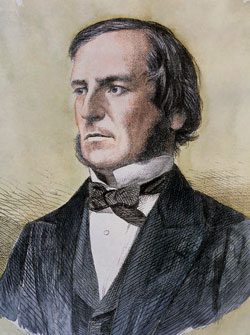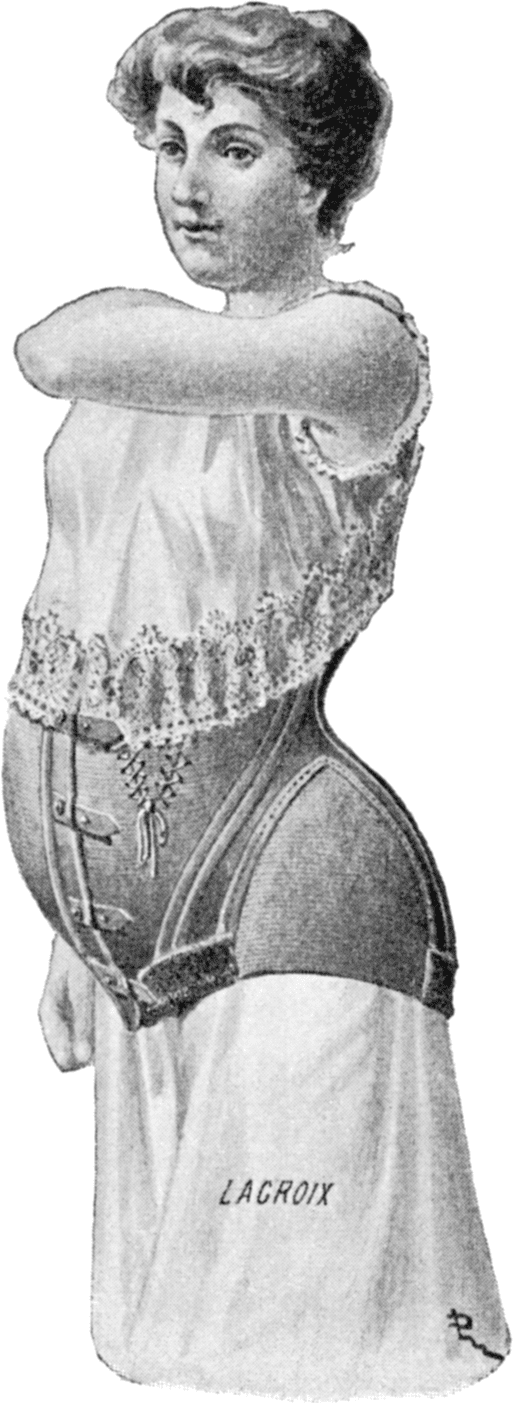C. Anthony Ryan
Desmond MacHale
Yvonne Cohen
Cork, Ireland

In 2015, two cities celebrated the 200th anniversary of George Boole’s birth: the City of Lincoln, England where he was born, and Cork City, Ireland, where he died and was buried. Boole was a professor of mathematics at what was then Queen’s College, Cork (now University College Cork), in Ireland. Boole’s work founded the discipline of algebraic logic described in his books: The Mathematical Analysis of Logic1 (1847) and The Laws of Thought2 (1854), wherein he reduced the four propositional forms of Aristotle’s logic to formulae in the form of equations which could then handle multi-term propositions and arguments.
This year, 2016, is the 100th anniversary of the death of his wife, Mary Everest Boole, niece of the Surveyor General of India, Lord Everest, after whom the world’s highest mountain is called. The Booles were well-matched, as she was also unconventional, intelligent, and mathematical in her own right. They married in 1855 when Boole was thirty-nine and she was only twenty-one years old. They had five girls, all extremely talented.
Behind Boole’s mathematical genius lay a gentle man who was intimately involved with his family.3 We have uncovered a letter (from the Boole Papers in the Boole library at UCC) written by Boole on 21 June 1856 thanking Dr. John Bury, a Medical Doctor from Chester, England, for his advice during their first pregnancy. Issues covered in the letter included counsel against the common practice of corseting in Victorian times, the role of exercise in pregnancy, medicinal use in pregnancy and labor, the natural birthing process, and lactation of the newborn infant. We do not have a record of Dr. Bury’s advice to Boole.
The previously confirmed bachelor, Boole is clearly overawed by the miracle of the birth of the child he had helped to create. His joy and love come through as he writes just two days after the birth:
I am now a father. My little first-born—a daughter—came into the world two days ago. It is a fine healthy child and its dear mother is wonderfully well.
He wrote that Mary Boole also had to cope with conflicting advice from “experienced matrons” who frequently contradicted Dr. Bury’s recommendations:
She had the courage, in spite of perpetual forebodings of evil from experienced matrons to follow out your (Bury’s) advice implicitly.
Unlike most Victorian women, Mary Boole, on the advice of Dr. Bury, “wore neither stays nor corsets nor compresses of any kind.” Boole adds:
That people who have been in the habit of wearing stays and such like imagined supports may need them during pregnancy is probable enough. But that those who have not worn them previously and who continue to dispense with them are the better for the exemption.

Paris: Librairie Médicale et Scientifique
Mme & M, F. Lacroix
Stays were the fully boned laced bodices and the term probably comes from the French “estayer” meaning “to support.” In pregnancy, corsets were designed to mask, even minimize, the size of the pregnant body although pregnant women used specialized maternity corsets that had laced panels that expanded as their bellies grew. George Boole was correct in not encouraging these supports since constant corseting, especially when began in late childhood, often caused weakening of wearer’s back and dependency on the corset due to muscle atrophy. Tight corseting also made it difficult to participate in exercise by reducing lung capacity, the next issue raised in Boole’s letter.
According to Boole, his young wife remained active throughout her pregnancy:
I believe it to have been a consequence of this freedom (from corseting) that she was able to take an amount of exercise very unusual for persons in her situation up to the day of her confinement. Her step remained as light as ever and her motion was unimpeded.
Today, it is still considered most important to remain physically active during pregnancy. Exercise has significant benefits that are associated with improved pregnancy outcomes. Exercises involving balance, like biking or skiing, or contact sports can be risky during the latter trimester of pregnancy. In Victorian times, horse riding would have been the exercise most discouraged: “the moment symptoms of pregnancy develop themselves she must instantly give it up, or it will very probably cause her to miscarry.”4
When writing to Dr. Bury, Boole very pointedly refers to his wife’s avoidance of medicinal products during pregnancy (and later in labor). Boole’s attitude towards medications could have been colored by his experience with his father, a cobbler, who appeared to have become addicted to opiates in the latter part of his life: “Perhaps I ought to add that during her pregnancy my wife took no medicine whatever—nor has she taken any since. She has needed none.”
So, to what medicines could Boole have been referring in his letter to Bury? Today it may be hard to believe, but in early- and mid-Victorian times it was possible to walk into a chemist’s shop and buy without prescription opium, cocaine, and even arsenic. The most popular opium derivative was laudanum, a tincture of opium mixed with wine or water. Laudanum, called the “aspirin of the nineteenth century,” was widely used in Victorian households as a painkiller, recommended for a broad range of ailments including cough, diarrhea, rheumatism, “women’s troubles,” cardiac disease and even delirium tremens.5 Ultimately, the Dangerous Drugs Act of 1920 banned the use of these drugs.
Boole almost certainly was not present during Mary Boole’s labor. The doctor and midwife present at his wife’s confinement assured Boole that everything had gone as expected, even better than expected for a first time mother. Boole writes:
Her suffering during labor was less than is generally experienced in a first confinement—nor was it really severe for more than an hour or two. The nurse tells me that she was never present at a more satisfactory case and the doctor confirms her judgement. When it was over, she seemed well, talked cheerfully during the evening and slept like an infant the whole night.
George Boole had strong opinions about pain in childbirth: “I think that a great deal of suffering, certainly to the mother and probably to the child, is due to the neglect of Nature’s plainest dictates.”
The prevailing philosophy in Victorian times and consistent with Christian thought was that women are meant to feel pain in labor for Divine purposes. This was why there was such an outcry when, on 7 April 1853, Dr. John Snow anesthetized Queen Victoria when Prince Leopold was born.6 It was said: “He had no right to rob God of the deep, earnest cries’ of women in childbirth!”
Mary Boole breastfed her baby girl, Mary Ellen, later familiarly nicknamed Puss. Boole was present for the first latching on of the baby to her mother’s breasts.
The next evening her breasts gave without any previous accession of fever or uneasiness—and the only symptom she noticed in reply to an inquiry of mine—was a little giddiness at the moment when the child first began to suck. She and the child are at this moment are as well as it is, I suppose, possible for them to be under the circumstances.
The Boole’s were married on 11 September 1855 and Mary Ellen (Puss) was born on 19 June 1856, a honeymoon baby. Their second daughter, Margaret, was born in September 1858. In a letter to her sister-in-law in England, we can see Mary Boole’s formidable writing skills, which she later put to use in writing her own books on education and psychology. It is also worth noting the precocious observational and linguistic skills of the now 3-year-old Mary Ellen that attest to her intelligence and later brilliance.
. . . I wish you could see Puss with the Baby. She is fond of it to a most distressing degree and keeps me in a constant fidget for fear her eye will be put out by one of her caresses. She got very angry with it once for “biting my own Mamma”. I thought it necessary to explain that Baby was only getting her breakfast, not biting me. (I thought Puss might get jealous at its not being punished, as she would have been). Then she examined further and exclaimed in great surprise “She’s getting her milk out of a strawberry!”
Boole died prematurely at only forty-nine years of age, after catching a chill while walking to College in heavy rain and lecturing all day in wet clothes. He was buried in St. Michael’s Church, Blackrock, Cork, when his youngest daughter Ethel Lillian was only nine months old. At the age of ninety, E.L. Voynitch (as she was now known as the renowned author of the revolutionary book The Gadfly) recounted an anecdote about her famous father related to the birth of her eldest sister, Mary Ellen. She told of him knocking on the doors of the cottages in the back streets near University College Cork, joyfully telling the locals of the birth of his beautiful baby girl. She adds, “I was only a few months old when he died, but after all, if I knew nothing about him except this story, I should feel proud to be his daughter.”
References
- George Boole, The Mathematical Analysis of Logic, Being an Essay Towards a Calculus of Deductive Reasoning. Originally published in Cambridge by Macmillan, Barclay, & Macmillan, 1847. Reprinted in Oxford by Basil Blackwell, 1951.
- George Boole, An Investigation of The Laws of Thought on Which are Founded the Mathematical Theories of Logic and Probabilities. Originally published by Macmillan, London, 1854. Reprint by Dover, 1958.
- MacHale D. The Life and Work of George Boole: A Prelude to the Digital Age. Cork University Press.
- Chavasse PH. Advice to a Wife on the Management of her own Health, and on the Treatment of some of the Complaints incidental to Pregnancy, Labour, and Suckling,
- Victorian Drug Use. Dr Andrzej Diniejko, D. Litt.; Contributing Editor, Poland. The Victorian Web: Literature, History and Culture in the age of Victoria. http://www.victorianweb.org/victorian/science/addiction/addiction2.html
- Caton: What A Blessing She Had Chloroform: The medical and social response to the pain of childbirth from 1800 to the present. Yale University Press; 1 edition (June 10, 1999)
C. ANTHONY RYAN, department of Neonatology Cork University Maternity Hospital and Department of Paediatrics and Child Health, University College Cork, Cork Ireland
DESMOND MACHALE, department of Neonatology Cork University Maternity Hospital and Department of Paediatrics and Child Health and department of Mathematics, University College Cork, Cork Ireland.
YVONNE COHEN, department of Neonatology Cork University Maternity Hospital and Department of Paediatrics and Child Health and department of Mathematics, University College Cork, Cork Ireland.
Highlighted in Frontispiece Spring 2017 – Volume 9, Issue 2

Leave a Reply